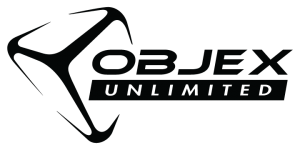- ProXTM 400 Direct Metal Printing (DMP) features larger metal printing and automated finishing for factory production
- ProXTM 500 Plus with expanded materials and higher productivity, powered by 3DS’ Selective-Laser-Sintering (SLS®)
- ProXTM 800 delivers fab-grade productivity using 3DS’s Stereolithography (SLA®) technology
- ProJet® 1200 with expanded set of materials for casting, modeling and prototyping
- Additions to its design-to-manufacturing digital thread with cloud and desktop functionality and utility
ROCK HILL, South Carolina, November 17, 2014 – 3D Systems (NYSE:DDD) today announced the advancement of 3DPRINTING 2.0 with several next generation printers, advanced material options and additions to its design-to-manufacturing digital thread that will accelerate the ability to manufacture the future NOW. The company will reveal these new solutions throughout the week and showcase its full power of 3DPRINTING 2.0 at EuroMold 2014 in Frankfurt, Germany from November 25-28, 2014 at the Messe Frankfurt in booths D69 and F90 in hall 11.
“We are thrilled to unveil a new suite of products that will support the most demanding manufacturing applications, especially in activities such as aerospace, automotive, personalized healthcare and the production of high performance, end-use parts,” said Avi Reichental, President and Chief Executive Officer, 3DS. “Our 3D PRINTING 2.0 solutions unlock significantly faster product development cycles, seamless content-to-print digital workflows and truly unprecedented part performance, as we continue to lead the field of advanced manufacturing, from the engineer’s desktop to the factory floor.”
3DS plans to showcase its latest capabilities, including new products that build on its leading technology in Direct Metal Printing (DMP), Stereolithography (SLA®) and Selective Laser Sintering (SLS®), together with new advanced materials that open entirely new applications. The company also plans to debut a new suite of 3D software and scanning solutions that substantially enhance its design-to-manufacturing digital thread, providing users with expanded capabilities and simple-to-use tools.
These next generation products and design-to-manufacturing solutions include:
Largest metal parts printing with factory production features – 3DS will preview the latest addition to its ProXTM Direct Metal Printing (DMP) line, the ProX 400, with the largest build size of any metal 3D printer and factory production features including automated finishing and a modular design. This printer will feature 3DS’ class-leading accuracy and surface quality, with high-quality, fully dense metal parts for demanding high-capacity industrial applications.
Next generation fab-grade Stereolithograhy (SLA®) – The ProX 800 builds on the accuracy, reliability and precision of 3DS’ industry-leading Stereolithography(SLA®) technology, with new features for greater production efficiency, including revolutionary print head and material management systems, space-saving footprint and easy-to-use operator controls. Its exceptional build volume and speed are ideal for automotive, aerospace, medical device manufacturing and 3D printing service bureaus.
Groundbreaking Selective Laser Sintering (SLS®) with an expanded material set – 3DS will preview the ProX 500 Plus, which builds on the ProX 500’s superior part quality, precision and durability with an expanded range of new materials, faster print speeds and a higher resolution setting. New glass-filled, aluminum-filled and nylon materials enhance the production application sets of this production workhorse.
New materials and applications in Micro-SLA printing – 3DS is announcing five new materials for its ProJet® 1200 Micro-SLA 3D printer that will expand applications for dental labs, jewelers, manufacturers, engineers and 3D artists. New FTX Cast and FTX Gold and FTX Silver give jewelers a complete digital prototyping and production workflow, and new FTX Gray and FTX Clear add to the complete portfolio of material options for small end-use parts and presentation models for engineers and figurines and design creation for 3D artists.
Advanced composites and flexible materials for MultiJet printing – New materials for the ProJet 5500X offer new levels of versatility for models, functional prototypes and end-use parts, with tough, functional-grade, flexible elastomers in black and translucent. Combining the new materials with the VisiJet® white and clear ABS-like plastic print materials, the ProJet 5500X can create up to 14 unique materials in a single print.
Scan-based design and inspection system for small, precise parts – The Capture® Mini is based on the previously released Capture system and designed specifically for small, precise parts scanning and inspection. Perfect for small mechanical parts, jewelry and dental models, the Capture Mini and Geomagic® software provide a complete digital thread for capture, creation, print and inspection workflows.
Empowering the design-to-manufacturing digital thread –3DS will showcase a cloud and desktop-based app that manages the design-to-manufacturing digital thread in a seamless user experience, whether at the print device level, or extending to the cloud for printing, collaboration and file sharing anywhere at any time, with easy access to 3DS’ on-demand parts service, Quickparts®.
3DMe® scanning and printing experience comes to the retail and event space – 3DS will showcase its 3DMe® Photobooth, a compact 3D scanning kiosk with an integrated 3DMe figurine app along with ecommerce and fulfillment. With an easy, self-guided interface, instant face capture and small footprint, it’s perfect for retailers and event venues to bring the 3DMe experience to their space.
Join 3DS’ President and CEO, Avi Reichental, for a broadcast of 3DS’ extensive showing at EuroMold by visiting http://www.3dsystems.com/resources/press-room/euromold-2014 and clicking on the broadcast link starting at 10:00 a.m. EST on Tuesday, November 25, 2014.
Find out more about EuroMold 2014 at www.euromold.com and learn about 3DS’ commitment to manufacturing the future at www.3dsystems.com.
About 3D Systems
3D Systems is pioneering 3D printing for everyone. 3DS provides the most advanced and comprehensive 3D design-to-manufacturing solutions including 3D printers, print materials and cloud sourced custom parts. Its powerful digital thread empowers professionals and consumers everywhere to bring their ideas to life in material choices including plastics, metals, ceramics and edibles. 3DS’ leading healthcare solutions include end-to-end simulation, training and integrated 3D planning and printing for personalized surgery and patient specific medical and dental devices. Its democratized 3D design and inspection products embody the latest perceptual, capture and touch technology. Its products and services replace and complement traditional methods with improved results and reduced time to outcomes. These solutions are used to rapidly design, create, communicate, plan, guide, prototype or produce functional parts, devices and assemblies, empowering customers to manufacture the future.
Leadership Through Innovation and Technology
•3DS invented 3D printing with its Stereolithography (SLA) printer and was the first to commercialize it in 1989.
•3DS invented Selective Laser Sintering (SLS) printing and was the first to commercialize it in 1992.
•3DS invented the ColorJet Printing (CJP) class of 3D printers and was the first to commercialize 3D powder-based systems in 1994.
•3DS invented MultiJet Printing (MJP) printers and was the first to commercialize it in 1996.
•3DS Medical Modeling pioneered virtual surgical planning (VSP) and its services are world-leading, helping many thousands of patients on an annual basis.
Today its comprehensive range of 3D printers is the industry’s benchmark for production-grade manufacturing in aerospace, automotive, patient specific medical device and a variety of consumer, electronic and fashion accessories.
More information on the company is available at www.3dsystems.com.















